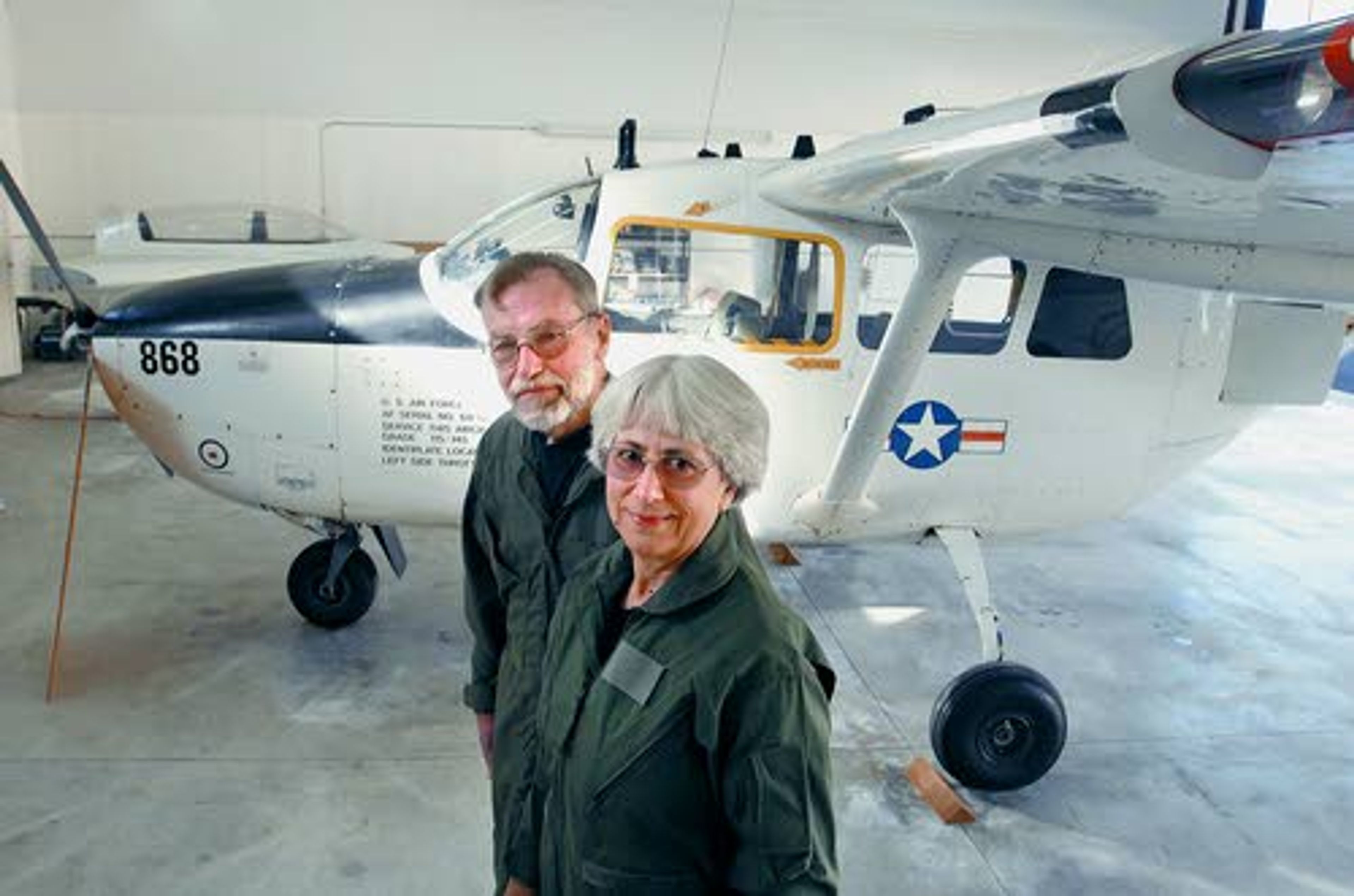BOISE - State Rep. Thyra Stevenson hopes to revive a high-flying legislative tradition that's been out of commission for about 40 years.
Stevenson, R-Lewiston, a longtime pilot, wants to jump-start the Idaho Flying Legislators.
The group first formed in 1947 and was quite active for a time, promoting the state's nascent aviation industry and monitoring its many backcountry airstrips.
It went dormant sometime in the 1970s, possibly because of increasing fuel costs, but with at least a half-dozen current and former pilots in the Legislature today, Stevenson thinks it's time to get the team back in the air.
"I don't expect we'll do a lot of flying, but there's an interest in promoting aviation. It's important to the state," she said.
Mike Pape, aeronautics division administrator for the Idaho Transportation Department, said the Flying Legislators used to have 30 or 40 members. The division would organize weekend excursions to different locations during the session. Lawmakers would hold other events on their own the rest of the year, flying in to various backcountry strips or touring National Guard facilities.
They weren't alone, Pape said. That was during the heyday of general aviation, when firms like Cessna, Piper and Beechcraft were in growth mode and private planes were reasonably affordable.
"Just about every group had a flying club," he said. "There were flying farmers, flying dentists, flying barbers."
That began to diminish with the 1970s oil crisis, and was further compounded by cost increases driven by product liability lawsuits. Nationally, Pape said, there's now about 30 percent fewer pilots than 30 years ago.
It's still popular in Idaho, though, which ranks fifth in the number of pilots per capita, according to statistics from the Federal Aviation Administration.
Besides Stevenson, other flying legislators today include Sens. Bart Davis, R-Bonneville, Lee Heider, R-Twin Falls, and Chuck Winder, R-Boise, and Reps. Marc Gibbs, R-Grace, Gary Collins, R-Nampa, and Joe Palmer, R-Meridian.
Stevenson fell in love with flying when she first experienced it as a girl. She started taking lessons and flew small planes as often as she could, building up her flight hours. Then she went to Miami and pestered commercial firms until they hired her as a pilot.
"You could do that back then," she said. "I just knew that was what I wanted to be. Flying is like nothing I've ever experienced. Except for diving, it's the only thing we do that's in three dimensions. The first time I took off in Miami, I looked out over the ocean and tears immediately began rolling down my face."
Stevenson flew DC-3s, Convairs and Boeing 727 cargo and passenger planes out of Miami for a number of years. More recently she served as a flight instructor and pilot for the Coast Guard Auxiliary.
She recently sold her own plane, but proudly displays photos of it. It's a 1967 Cessna O-2A Skymaster that was used as a forward surveillance plane in the Vietnam war.
"They'd fly in low (to spot enemy troops), then lay down smoke and radio the F-4 Phantoms to come in and hit the smoke," Stevenson said.
The plane still has at least one bullet hole from its war days, as well as simulated bombs and mini-guns.
Sen. Heider may have helped refuel it. He flew KC-135 Stratotankers for the Air Force during the war.
"After that I flew B-17s, on wildfires," he said. "I worked for Globe Aviation in Arizona, but flew all over Montana and Idaho, dropping retardant on fires."
Unlike his refueling runs during the war, the retardant drops were low-elevation runs in mountainous terrain.
"It wasn't 30,000 feet, put it on cruise control and order lunch," Heider said.
He also flew small planes for the Sun Valley air taxi for a time, so he'd be comfortable landing at Idaho's 100 or so backcountry airstrips. Stevenson said they're nice to visit, but she prefers more established airfields.
"I like 12,000 feet long and 200 feet wide," she said.
---
Spence may be contacted at bspence@lmtribune.com or (208) 791-9168.









